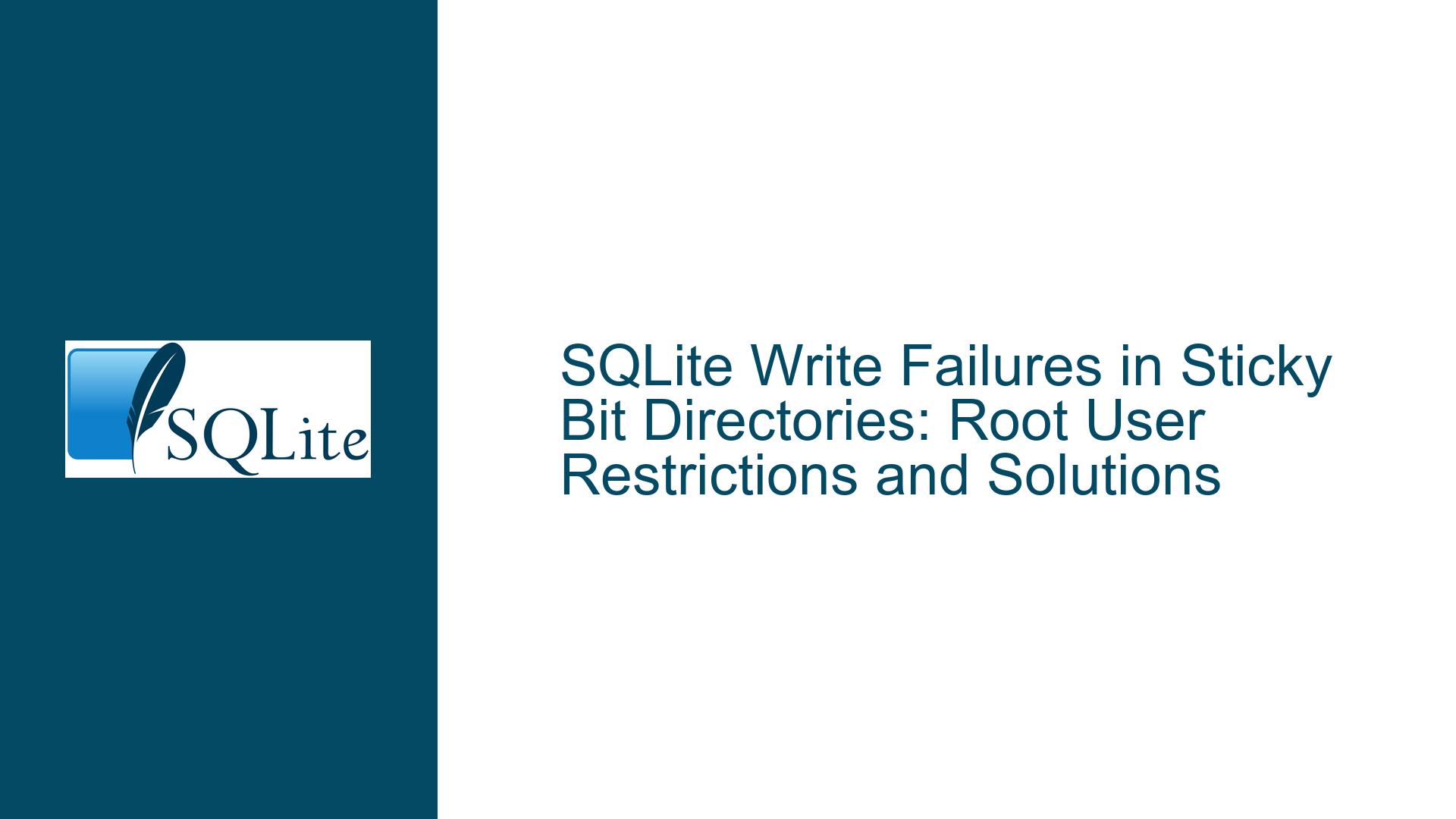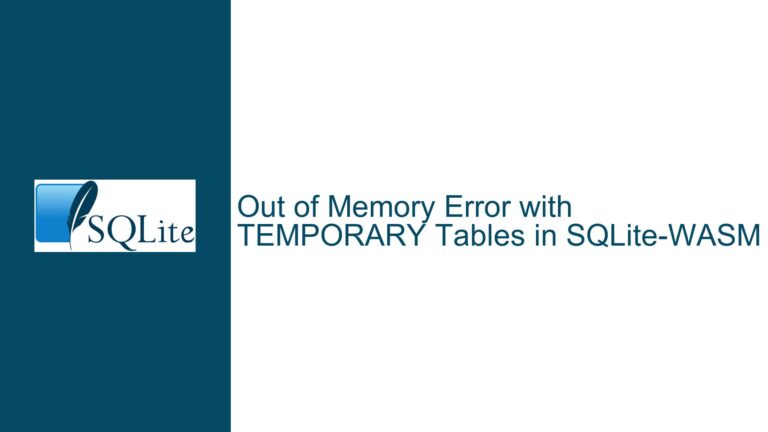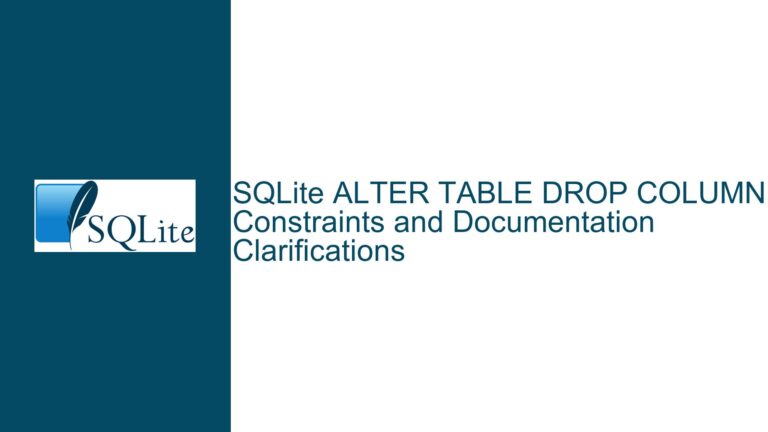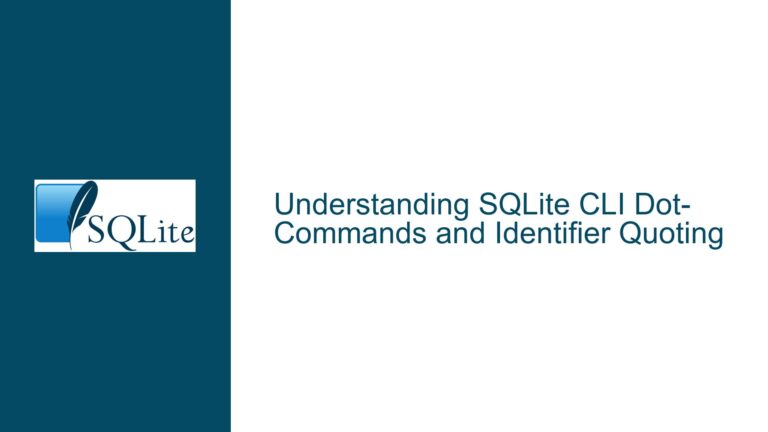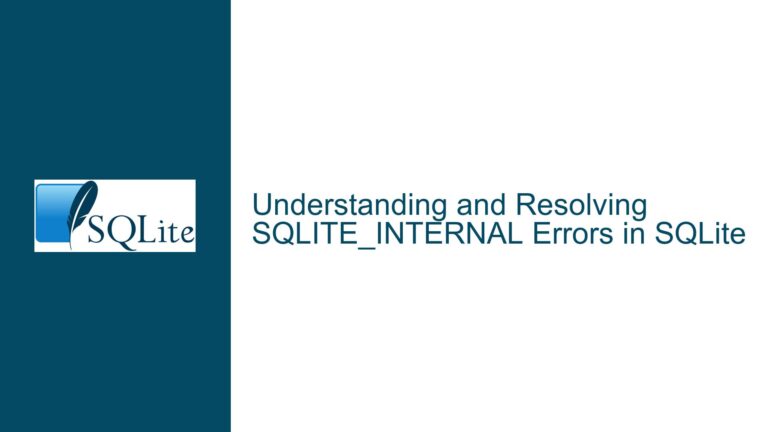SQLite Write Failures in Sticky Bit Directories: Root User Restrictions and Solutions
SQLite Write Operations Blocked in Sticky Bit Directories for Root User
When working with SQLite databases in directories where the sticky bit is set, root users may encounter unexpected write failures. Specifically, attempting to perform INSERT operations on a database file owned by a non-root user results in the error "attempt to write a readonly database." This issue arises even though the root user typically has unrestricted access to all files and directories on the system. The problem is particularly perplexing because removing the sticky bit from the directory resolves the issue, allowing the root user to write to the database without errors.
The sticky bit is a special permission setting in Unix-like operating systems that restricts file deletion and renaming within a directory. When set, only the file owner, directory owner, or root can delete or rename files within that directory. However, this restriction appears to interfere with SQLite’s internal mechanisms for managing write operations, particularly when the database file is owned by a non-root user and the root user attempts to modify it.
This behavior is not immediately intuitive, as root users are generally expected to bypass most permission restrictions. The issue highlights a nuanced interaction between SQLite’s file handling logic and the operating system’s permission model, particularly in scenarios involving mixed ownership and special directory permissions.
Sticky Bit Restrictions and SQLite’s Journaling Mechanism
The root cause of this issue lies in the interaction between the sticky bit’s restrictions and SQLite’s reliance on temporary files for journaling and write-ahead logging. SQLite uses these temporary files to ensure data integrity during write operations. When a write operation is initiated, SQLite creates a journal file or write-ahead log (WAL) in the same directory as the database file. These temporary files are essential for atomic commits, crash recovery, and rollback operations.
In directories with the sticky bit set, SQLite’s ability to create and manage these temporary files is hindered. Although the root user has the necessary permissions to modify the database file itself, the sticky bit’s restrictions prevent SQLite from creating or deleting the required temporary files. This limitation is particularly pronounced when the database file is owned by a non-root user, as SQLite takes additional precautions to avoid creating root-owned temporary files that could render the database inaccessible to the original owner.
The SQLite library includes safeguards to prevent scenarios where a root-owned journal file could be left behind, potentially locking out non-root users. These safeguards are designed to maintain the database’s usability for its original owner, even if a root user attempts to modify it. However, this protective measure inadvertently blocks write operations when the sticky bit is set, as SQLite cannot create the necessary temporary files without violating its own safety constraints.
Resolving Write Failures with PRAGMA Settings and Ownership Adjustments
To address this issue, several approaches can be taken, each with its own trade-offs. The most straightforward solution is to remove the sticky bit from the directory containing the database file. This allows SQLite to create and manage temporary files without restrictions, enabling the root user to perform write operations. However, this approach may not be feasible in environments where the sticky bit is required for security or operational reasons.
An alternative solution involves modifying SQLite’s journaling behavior using PRAGMA commands. Setting PRAGMA journal_mode = OFF disables journaling entirely, eliminating the need for temporary files. While this resolves the write failure issue, it comes at the cost of reduced data integrity. Without journaling, SQLite cannot guarantee atomic commits or provide crash recovery, increasing the risk of database corruption in the event of a power failure or system crash.
Another option is to use PRAGMA journal_mode = PERSIST, which retains the journal file instead of deleting it after each transaction. This reduces the frequency of file creation and deletion, potentially mitigating the impact of the sticky bit’s restrictions. However, this approach requires careful management of the journal file to avoid conflicts and ensure proper database operation.
For environments where the sticky bit cannot be removed and journaling must remain enabled, a more complex workaround involves changing the ownership of the database file to the root user. This allows SQLite to create root-owned temporary files without violating its safeguards. However, this approach may not be suitable if the database must remain accessible to non-root users.
In cases where changing file ownership is not an option, the root user can temporarily assume the identity of the database file’s owner using the su command. This allows SQLite to create temporary files with the correct ownership, bypassing the restrictions imposed by the sticky bit. While effective, this approach adds complexity to the workflow and may not be practical for all use cases.
Each of these solutions addresses the issue from a different angle, balancing the need for write access with the requirements of data integrity, security, and operational flexibility. The choice of solution depends on the specific constraints and priorities of the environment in which the database is used.
| Solution | Pros | Cons |
|---|---|---|
| Remove sticky bit | Simple, effective | May compromise security |
| PRAGMA journal_mode = OFF | Resolves write failures | No crash recovery or atomic commits |
| PRAGMA journal_mode = PERSIST | Reduces file creation/deletion overhead | Requires careful journal file management |
| Change database file ownership | Maintains journaling and data integrity | May restrict non-root user access |
Use su to assume owner identity | Preserves original file ownership | Adds complexity to workflow |
In conclusion, the interaction between SQLite’s journaling mechanism and the sticky bit’s restrictions creates a challenging scenario for root users attempting to write to databases owned by non-root users. By understanding the underlying causes and exploring the available solutions, database administrators can implement the most appropriate fix for their specific environment, ensuring both data integrity and operational flexibility.
